- Home
- slideshows
- miscellaneous
- The rise and fall of Blockbuster
The rise and fall of Blockbuster
David Cook opened the first Blockbuster in 1985.

One year later, Cook expanded Blockbuster by opening three more stores.
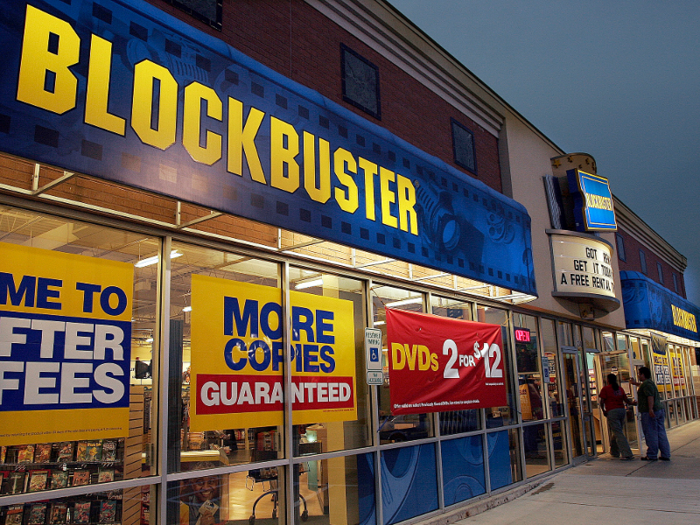
At the time, rental stores, like Blockbuster, were the only way people could watch movies that had left theaters without buying the VHS tapes themselves.
In 1987, three major investors took Blockbuster to the next level.
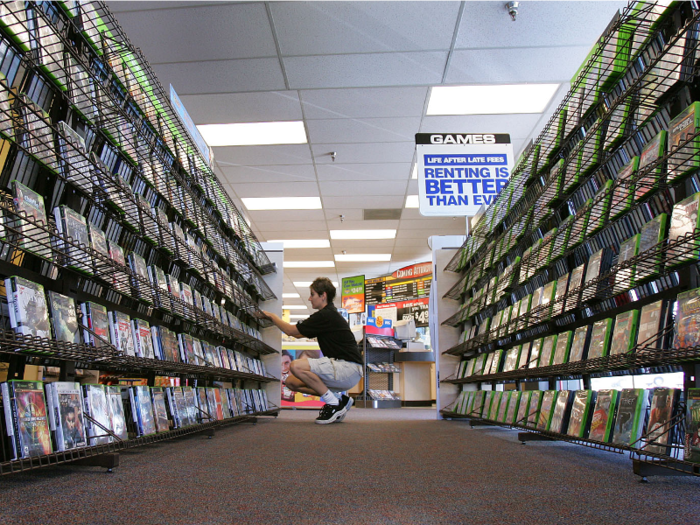
They invested $18.5 million in Blockbuster. Later that year, Cook left the company, as the headquarters moved to Fort Lauderdale, Florida.
Under new management, the company bought up local video stores and opened new ones under the Blockbuster branding.
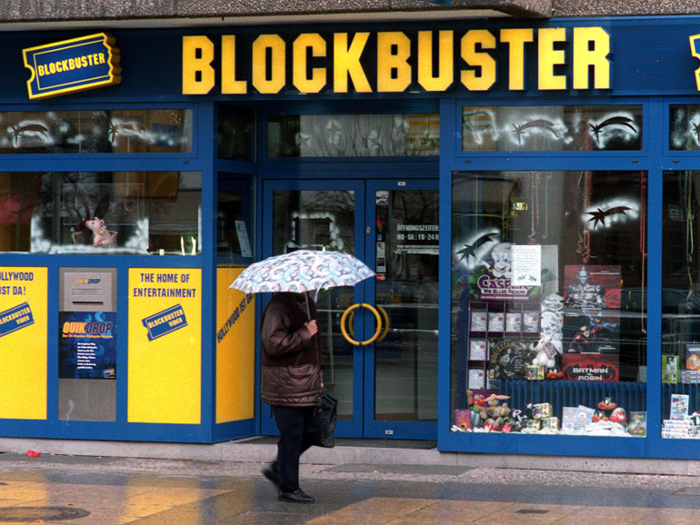
In 1988, Blockbuster became the leading video-store chain in the US with 800 stores.
In the '90s, Blockbuster hit a major milestone when it opened its 1,000th store.
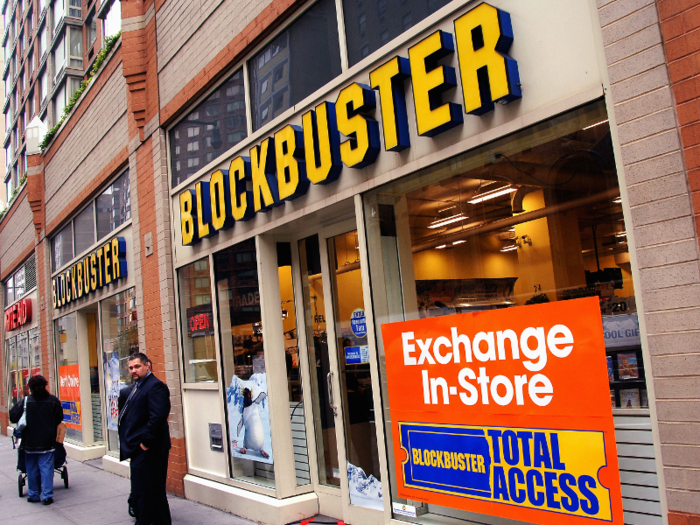
In 1992, the company also expanded overseas when it bought out video-rental chain Ritz in the UK. At this time, there were 2,800 Blockbuster stores.
In 1994, Viacom bought the video-rental company for $8.4 billion.
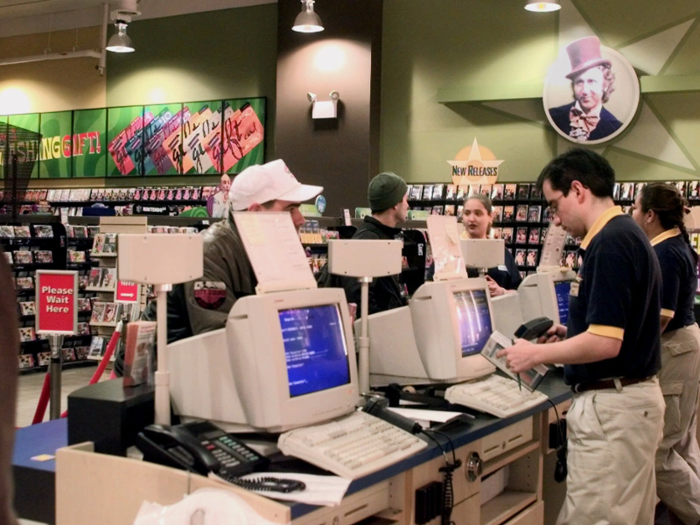
Five years later, Viacom took Blockbuster public, as the number of stores reached 6,000 globally.
But trouble was on the horizon in 1997, as Blockbuster's future competitor, Netflix, was founded.
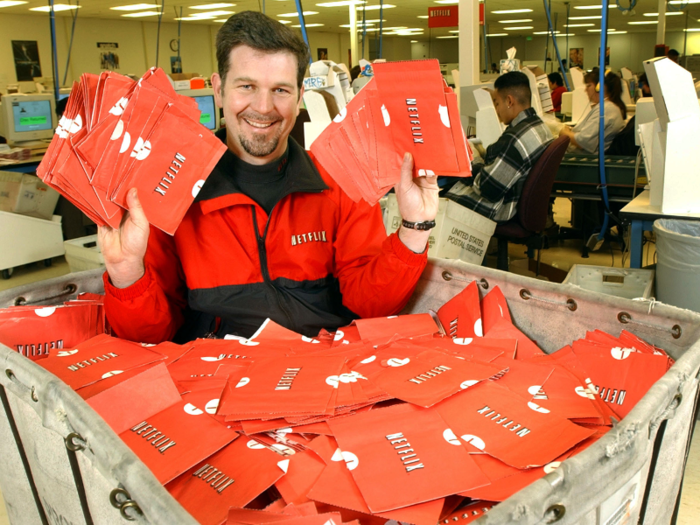
Blockbuster was known for charging customers a fee for every day they were late returning a movie rental. In fact, Blockbuster said it made $800 million in late fees, or 16% of its revenue. This frustrated many customers, including Netflix founder Reed Hastings.
Hastings said he founded Netflix because he did not want to pay the $40 fine he acquired at Blockbuster. In its early stages, Hastings' company, which had no late fees, would send DVDs straight to your house for a flat monthly rate.
In 2000, Blockbuster made the first mistake that would mark its demise: The company decided not to buy Netflix.
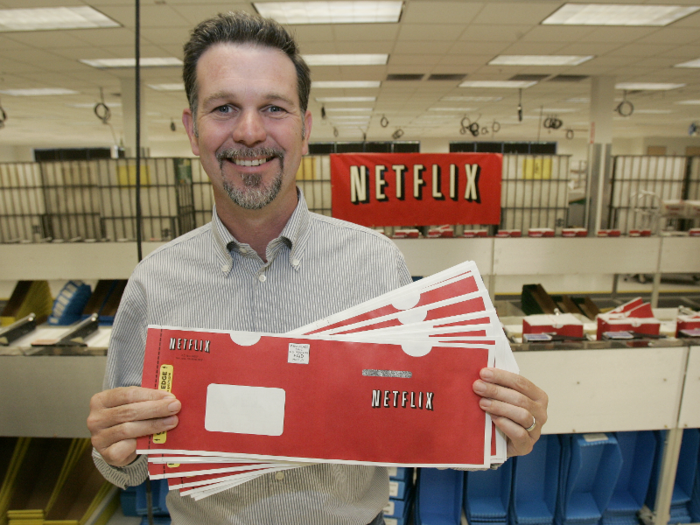
Blockbuster considered buying the popular Netflix service for $50 million, but the company decided to not make the purchase. Netflix went on to become even more popular and more profitable than Blockbuster.
In 2002, Blockbuster's other big competitor, Redbox, launched.
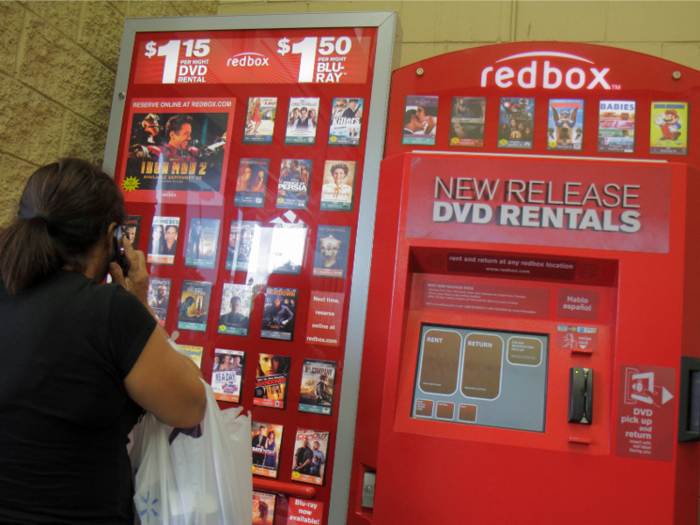
Redbox's addition to the market reinforced the idea that people wanted quicker rental options with no late fees, so Blockbuster had to make a change.
Despite the rise of Netflix and Redbox, Blockbuster was at its peak in 2004.
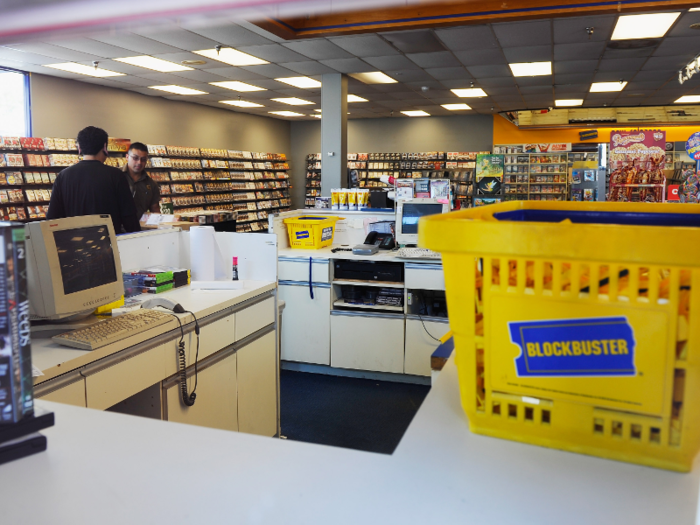
That year, Blockbuster had 9,000 stores globally, 60,000 employees, and earned $5.9 billion in revenue.
But the company started making major changes in the early 2000s that would ultimately lead to its downfall.
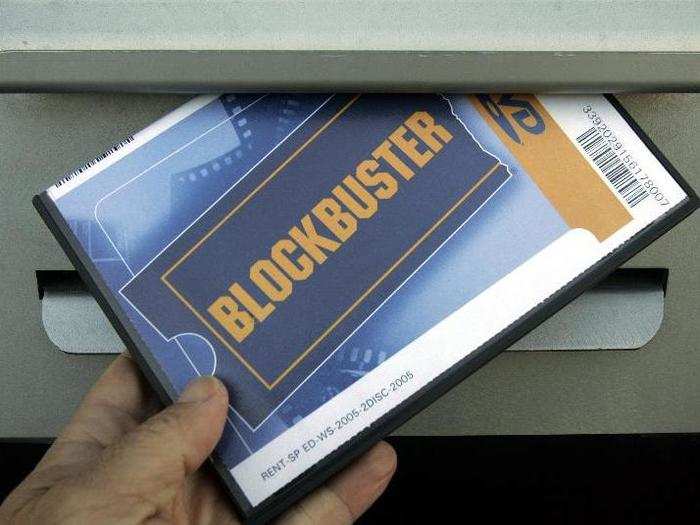
In 2004, Viacom parted ways with Blockbuster. That same year, the company launched Blockbuster Online, but it was already years behind Netflix.
At the same time, Blockbuster decided to end late fees. It was estimated that it would cost the company $200 million to stop collecting late fees and another $200 million to start the new venture, Blockbuster Online.
In the following years, Blockbuster's market value dwindled, hinting at its bleak future.
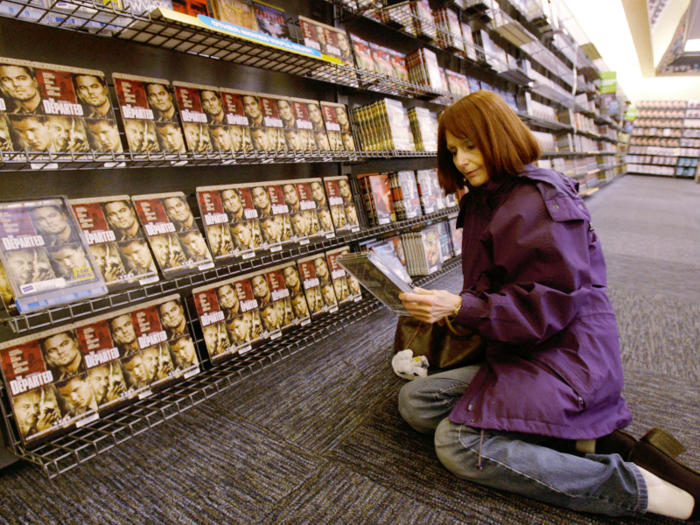
From 2003 to 2005, the company lost 75% of its market value, Forbes reported.
In 2010, the rental company filed for bankruptcy after Netflix's popularity continued to grow.
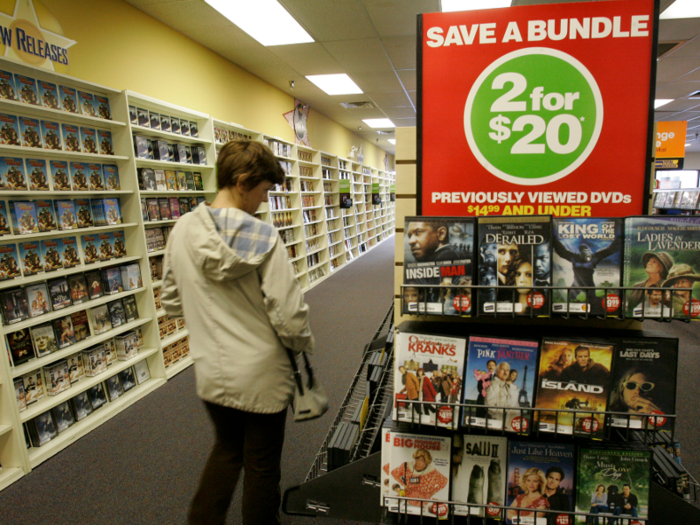
In an attempt to wipe out $1 billion of debt, Blockbuster filed for bankruptcy, and the company was delisted from the NYSE.
The following year, Dish Network bought the company out of bankruptcy for $320 million in hopes of keeping 600 stores open.
However, Dish Network announced in 2013 that it would close the remaining Blockbuster stores.
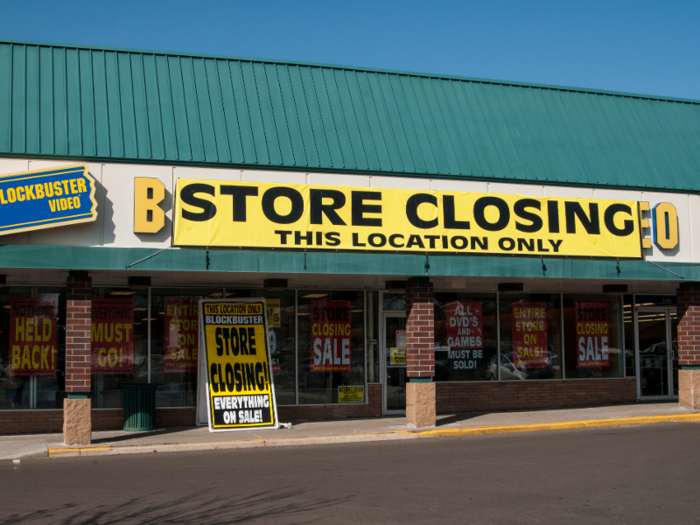
At the time, there were only 300 Blockbuster stores still in operation.
Today, the Blockbuster franchise has dwindled to just one store in Bend, Oregon.
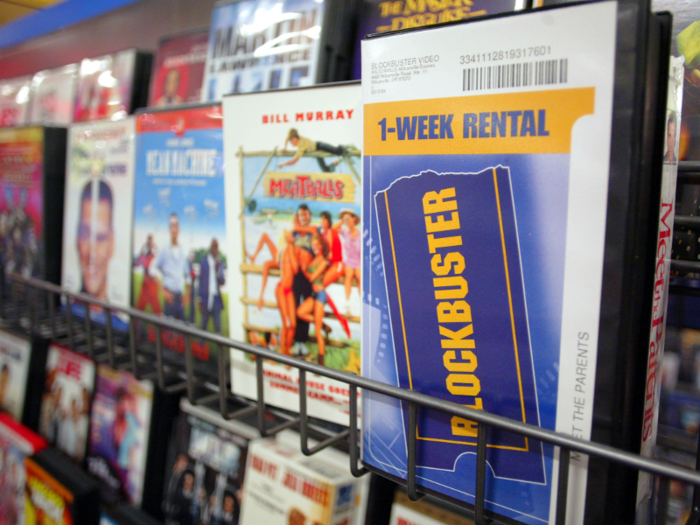
The standalone Blockbuster says it's still in operation because of its loyal customer base, citing the fact that they have 4,000 accounts and sign up new customers each day. The store also said a large number of tourists visits the store to reminisce about the former rental company.
At its peak, Blockbuster had 9,000 stores globally and made $5.9 billion, but today the once-famous video rental company has shrunk to a single store in a small town.
Popular Right Now
Advertisement